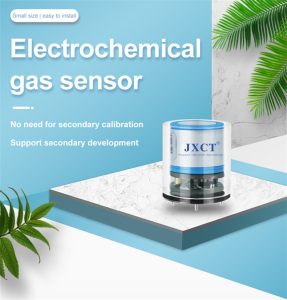Air pollution is a global concern that poses serious threats to human health and the environment. It is essential to monitor air quality continuously and accurately to mitigate the adverse effects of pollutants. Traditional air pollutant monitoring methods often involve manual sampling and laboratory analysis, which can be time-consuming and lack real-time data. However, with advancements in technology, smart gas sensors have emerged as effective tools for real-time pollution monitoring. In this article, we explore the concept of real-time pollution monitoring with smart gas sensors, their benefits, and their implications for public health and environmental conservation.

What are Smart Gas Sensors?
Smart gas sensors are compact electronic devices that can detect and measure various gases present in the atmosphere. These sensors utilize advanced technologies such as electrochemical, semiconductor, or optical techniques to monitor the concentration of specific gases. Unlike traditional monitoring methods, smart gas sensors provide real-time data by continuously measuring pollutant levels. They are capable of detecting a wide range of gases, including carbon monoxide (CO), nitrogen dioxide (NO2), ozone (O3), sulfur dioxide (SO2), volatile organic compounds (VOCs), and particulate matter (PM).
Real-time Data Collection and Analysis
One of the significant advantages of smart gas sensors is their ability to provide real-time data on pollutant concentrations. These sensors are equipped with wireless connectivity, allowing them to transmit data to a central monitoring system. This data can be accessed by regulatory agencies, researchers, industries, and the public, enabling prompt action and informed decision-making. Real-time data collection and analysis facilitate early detection of pollution hotspots, identification of pollution sources, and evaluation of the effectiveness of pollution control measures.
Early Warning Systems and Public Safety
Smart gas sensors play a crucial role in the development of early warning systems for hazardous gas leaks. These sensors can detect even trace amounts of toxic or flammable gases, triggering alarms or alerts to notify individuals and authorities. Early detection of gas leaks is vital in preventing accidents, protecting public safety, and minimizing the potential for explosions or chemical exposure. By providing real-time information, smart gas sensors enable prompt evacuation, emergency response, and mitigation measures.
Citizen Empowerment and Awareness
Real-time pollution monitoring with smart gas sensors empowers citizens by providing them with access to accurate and up-to-date information about air quality. This information encourages individuals to make informed decisions regarding outdoor activities, such as exercising or choosing routes with better air quality. Moreover, it raises awareness about the impact of pollution on health and motivates individuals to take actions to reduce their carbon footprint, such as using public transportation or adopting cleaner energy sources.
Environmental Impact Assessment and Control
Smart gas sensors contribute to environmental impact assessment and control efforts in various industries. They are utilized during construction projects, industrial operations, and waste management activities to monitor pollutant emission levels and ensure compliance with environmental regulations. Real-time data from these sensors allows industries to identify areas of improvement, optimize processes, and implement effective pollution control strategies. By actively monitoring and controlling emissions, smart gas sensors facilitate sustainable development and minimize the negative impact on ecosystems and biodiversity.
Urban Planning and Policy-making
Real-time pollution monitoring data obtained from smart gas sensors can inform urban planning and policy-making decisions. By mapping pollutant concentrations in different areas, policymakers can identify pollution hotspots and prioritize mitigation measures. This data aids in the development of land use plans, transportation systems, and emission reduction strategies. It also supports the implementation of low-emission zones and the promotion of sustainable urban development practices. By integrating real-time pollution monitoring into urban planning, cities can work towards creating healthier and more livable environments for their residents.

Conclusion
Real-time pollution monitoring with smart gas sensors revolutionizes the way we understand and address air pollution challenges. By providing continuous data collection, early warning systems, citizen empowerment, environmental impact assessment, and policy support, smart gas sensors contribute to public health protection and environmental conservation. The adoption of these advanced technologies is crucial for creating sustainable cities, improving air quality, and minimizing the adverse effects of pollution on human health. As technology conti
 : +86 155 8830 2704
: +86 155 8830 2704 : jxdziot@gmail.com
: jxdziot@gmail.com
